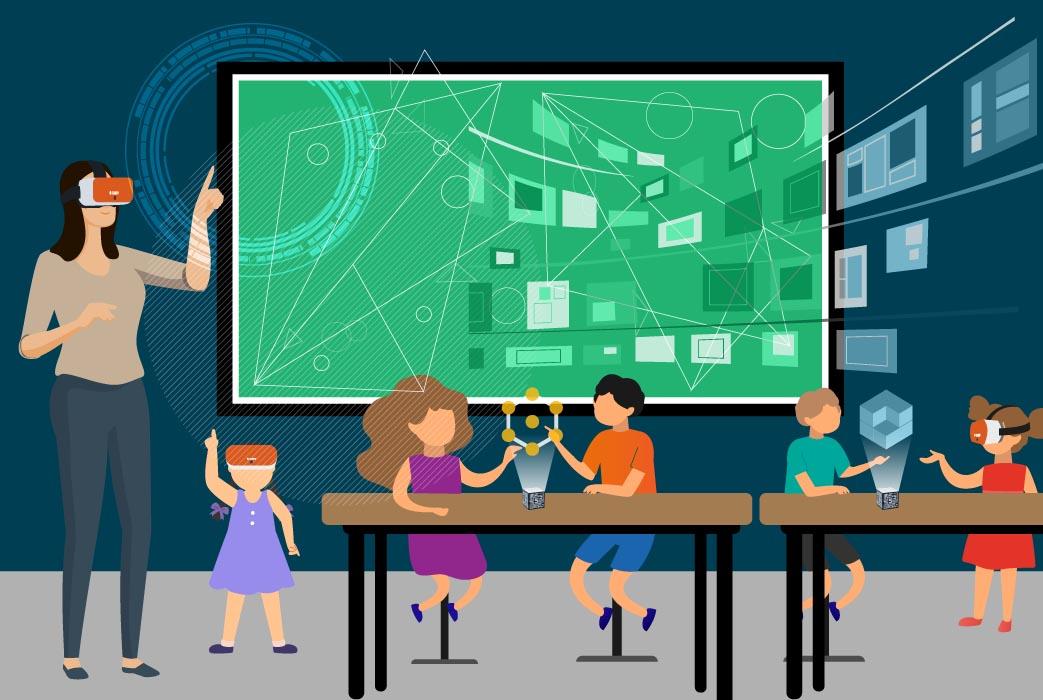Mastering Virtual Classrooms: Effective VR/AR Training Strategies for teachers
As education continues its leap into the digital era, virtual reality (VR) and augmented reality (AR) have emerged as transformative tools in modern classrooms. These immersive technologies offer educators unprecedented ways to engage students, foster deeper understanding, and create interactive learning experiences. In this comprehensive guide, we explore strategic approaches to mastering virtual classrooms through VR/AR training for teachers, complete with practical tips, real-world examples, and actionable insights.
What is VR/AR in Education?
Virtual reality (VR) immerses students in a 3D environment, allowing them to explore and interact in ways traditional classrooms can’t. In contrast, augmented reality (AR) layers digital facts onto the real world using smartphones or AR glasses. Together, VR and AR redefine classroom boundaries, enhancing both distance and in-person learning.
Benefits of VR/AR in Virtual Classrooms
- increased Engagement: Immersive experiences maintain students’ attention and interest.
- Deeper Understanding: Complex concepts like biology or history become tangible and interactive.
- personalized learning: Adaptive modules meet varied learning styles and paces.
- Safe Experimentation: Simulated environments let students experiment without real-world risks.
- developing 21st-Century Skills: Enhances digital literacy, collaboration, and problem-solving abilities.
Effective VR/AR Training strategies for Teachers
To truly maximize the potential of virtual classrooms using VR/AR, teachers need tailored training and support. Below are proven strategies for successfully integrating immersive technology in education:
1.Begin with Hands-On Workshops
- organise interactive workshops introducing VR/AR devices and software.
- Allow teachers to experience both student and instructor perspectives in VR/AR environments.
2. Focus on Practical Applications
- Highlight subject-specific uses, such as virtual science labs, history field trips, or language immersion simulations.
- Demonstrate how VR/AR can be incorporated into daily lesson plans, not just as standalone tech activities.
3.Build Digital Competency Step-by-Step
- Start with basic tools and gradually introduce more advanced features.
- Encourage teachers to set achievable goals for integrating VR/AR in their teaching.
4. Leverage Peer Collaboration
- Create school-based or online communities for teachers to share resources, troubleshoot, and celebrate successes.
- Host regular “show-and-tell” sessions to spotlight VR/AR lesson successes and best practices.
5. Prioritize Accessibility and Inclusivity
- select VR/AR tools compatible with a range of devices to ensure equal access.
- Include guidance for supporting students with different learning needs or disabilities.
6. Ongoing Professional Growth
- Encourage participation in certified VR/AR teaching courses and webinars.
- Stay updated with the latest in educational technology trends and adapt training modules accordingly.
7. Implement Feedback and Reflective Practices
- Use surveys or feedback forms to assess comfort and efficacy levels post-training.
- Reflect on lessons and adjust integration strategies to improve outcomes.
Practical Tips for Teachers Adopting VR/AR Technology
- Start Small: Integrate short, manageable VR/AR activities before scaling up to full lessons.
- Utilize Free Resources: Platforms like Google Expeditions or BBC VR offer a wealth of ready-made virtual experiences.
- Foster a growth Mindset: Embrace experimentation and mistakes as part of the learning curve.
- Establish Classroom Norms: Clearly communicate guidelines for device usage to maintain focus and respect equipment.
- Work Closely with IT Staff: Seek technical support early and often to resolve any potential hardware or software issues promptly.
case Studies: VR/AR in Action
Case Study 1: Virtual Field Trips at Lincoln Elementary
After a VR training workshop, teachers at Lincoln Elementary used Google Expeditions to take students on virtual trips to the Egyptian pyramids. The result? Engagement levels soared, and students demonstrated stronger retention of historical facts compared to previous years.
Case Study 2: Interactive Science with AR at Rivera High School
Biology teachers integrated AR applications to simulate the human cell. Students manipulated cell structures in real space, which led to a 20% increase in test scores and excited feedback on the learning process.
Case Study 3: Language Immersion at Global Academy
By using immersive VR environments, language teachers at Global Academy provided students with real-life conversational practice with avatars, resulting in noticeably improved speaking skills and greater cultural awareness.
Overcoming challenges in VR/AR Implementation
- Budget Constraints: Seek grants or pilot programs; leverage affordable headsets and mobile AR options.
- Technical Barriers: Partner with IT staff for troubleshooting and updates.
- Teacher confidence: Provide ongoing support, coaching, and community encouragement.
- student Accessibility: Opt for platforms that work on common devices, and plan alternate activities for students without access.
First-hand Experience: An Educator’s Journey
“at first, I found the idea of using VR daunting, but hands-on workshops and peer support made all the difference. Watching my students explore the solar system in 3D was incredibly rewarding. VR not only boosted engagement but also helped my students retain complex information far more effectively.” – Jessica Tran, 8th Grade Science Teacher
Future-Proofing Teaching with VR/AR
Embracing VR and AR is not just about adopting new gadgets; it’s about preparing educators and students for the future of learning. As technology evolves, teachers who master virtual classrooms can deliver personalized, engaging education and develop lifelong learners ready for the digital age.
Conclusion: Empowering Educators in the Digital Frontier
Mastering virtual classrooms with effective VR/AR training strategies for teachers opens doors to truly immersive, impactful education. Through hands-on practice, continuous professional development, and collaboration, teachers can harness the power of immersive technology to transform how they teach and how students learn. As schools invest in the future, equipping educators with the right strategies is the first step towards realizing the full potential of virtual classrooms.

